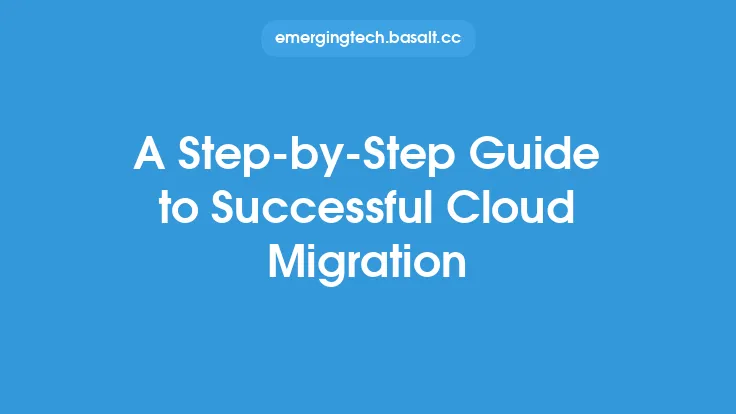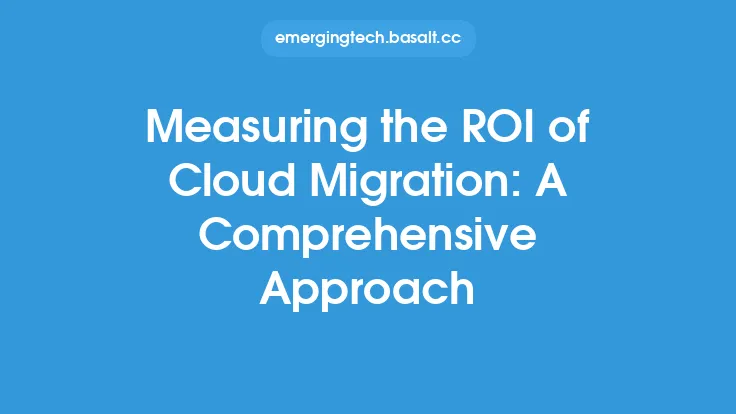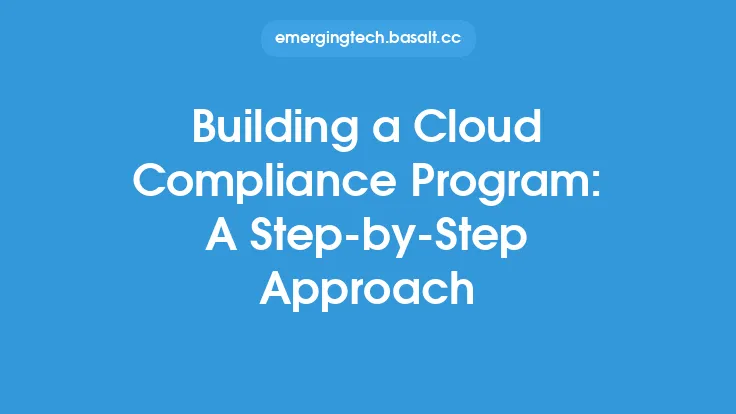Assessing an organization's readiness for cloud migration is a critical step in the migration process. It involves evaluating the organization's current infrastructure, applications, and operations to determine their suitability for cloud deployment. This assessment helps identify potential risks, opportunities, and challenges that may arise during the migration process, allowing organizations to make informed decisions and develop a tailored migration strategy.
Introduction to Cloud Readiness Assessment
A cloud readiness assessment is a comprehensive evaluation of an organization's IT environment, including its infrastructure, applications, data, and security. The assessment aims to identify the organization's strengths, weaknesses, opportunities, and threats (SWOT analysis) in relation to cloud migration. It involves analyzing the organization's current state, defining its target state, and developing a roadmap to achieve the desired cloud-based infrastructure. The assessment typically covers several key areas, including infrastructure, applications, data, security, and governance.
Key Components of Cloud Readiness Assessment
A thorough cloud readiness assessment involves evaluating several key components, including:
- Infrastructure: This includes assessing the organization's current hardware, software, and network infrastructure to determine its compatibility with cloud-based services. The assessment evaluates the organization's server, storage, and network resources, as well as its virtualization and containerization capabilities.
- Applications: This involves evaluating the organization's applications to determine their suitability for cloud deployment. The assessment considers factors such as application architecture, dependencies, and compatibility with cloud-based services.
- Data: This includes assessing the organization's data management practices, data security, and data compliance requirements. The assessment evaluates the organization's data storage, processing, and analytics capabilities, as well as its data governance and management practices.
- Security: This involves evaluating the organization's security posture, including its threat landscape, vulnerability management, and compliance requirements. The assessment considers factors such as identity and access management, network security, and data encryption.
- Governance: This includes assessing the organization's IT governance framework, including its policies, procedures, and standards. The assessment evaluates the organization's IT service management practices, including its incident management, problem management, and change management processes.
Benefits of Cloud Readiness Assessment
Conducting a cloud readiness assessment offers several benefits, including:
- Reduced risk: A thorough assessment helps identify potential risks and challenges associated with cloud migration, allowing organizations to develop strategies to mitigate them.
- Improved planning: The assessment provides a clear understanding of the organization's current state and target state, enabling the development of a tailored migration strategy.
- Increased efficiency: The assessment helps organizations prioritize their migration efforts, focusing on the most critical applications and services first.
- Cost savings: A cloud readiness assessment can help organizations avoid costly mistakes and optimize their cloud spending by identifying the most suitable cloud services and deployment models.
- Enhanced security: The assessment helps organizations identify potential security risks and develop strategies to ensure the secure migration of their applications and data to the cloud.
Best Practices for Cloud Readiness Assessment
To ensure a successful cloud readiness assessment, organizations should follow several best practices, including:
- Engage stakeholders: Involve key stakeholders from various departments, including IT, finance, and business units, to ensure a comprehensive understanding of the organization's needs and requirements.
- Use standardized frameworks: Leverage standardized frameworks, such as the Cloud Security Alliance (CSA) or the National Institute of Standards and Technology (NIST), to ensure a thorough and consistent assessment.
- Conduct thorough analysis: Perform a detailed analysis of the organization's infrastructure, applications, data, security, and governance to identify potential risks and opportunities.
- Develop a tailored roadmap: Create a customized migration roadmap that addresses the organization's specific needs and requirements.
- Continuously monitor and evaluate: Regularly monitor and evaluate the organization's cloud readiness to ensure that it remains aligned with its business objectives and cloud strategy.
Tools and Techniques for Cloud Readiness Assessment
Several tools and techniques are available to support cloud readiness assessments, including:
- Cloud migration platforms: These platforms provide automated tools and services to assess, migrate, and manage cloud-based applications and data.
- Cloud assessment frameworks: These frameworks offer standardized templates and guidelines to support cloud readiness assessments.
- Cloud security tools: These tools provide automated vulnerability scanning, penetration testing, and compliance scanning to support cloud security assessments.
- IT service management tools: These tools offer automated incident management, problem management, and change management capabilities to support IT governance and service management.
Conclusion
Assessing cloud readiness is a critical step in the cloud migration process. It involves evaluating an organization's infrastructure, applications, data, security, and governance to determine its suitability for cloud deployment. By following best practices and leveraging standardized frameworks and tools, organizations can ensure a successful cloud readiness assessment and develop a tailored migration strategy that meets their specific needs and requirements. A thorough cloud readiness assessment helps organizations reduce risk, improve planning, increase efficiency, and enhance security, ultimately ensuring a successful cloud migration and maximizing the benefits of cloud computing.





